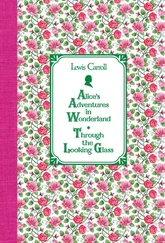Back in 1869, no one took much heed of Bastian’s stories. But once the debate over Magnus’s theory had flared up, the relevance of this information became apparent to the culturalists, and so suggestions were made that more information should be collected from peoples in remote corners of the globe. And thus it was that Rudolf Virchow, the founder and chairman of the Berlin Society for Anthropology, Ethnology, and Prehistory, took up the challenge by leading his entire society on the arduous trek across the Tiergarten to the Berlin Zoo, in order to check the Nubians firsthand. More intrepid scholars were extending the research beyond the confines of the zoo to examine the sense of color of primitive peoples in situ. The first such investigation was carried out in the same year, 1878, by Ernst Almquist, a doctor on board a Swedish expedition ship that was ice-locked in the Polar Sea. As the ship was forced to winter just off the Chukchi Peninsula in eastern Siberia, Almquist made the most of the opportunity by testing the color sense of the Chukchis, the nomadic reindeer herdsmen and seal hunters who inhabited the area. The Americans had it easier, because they had so many savages living right under their noses. Army doctors were instructed to test the color sense of the Indian tribes with whom they came in contact, and their evidence was compiled into a detailed report by Albert Gatschet, the ethnologist of the U.S. Geological Survey. In Britain, the science writer Grant Allen devised questionnaires to be sent to missionaries and explorers requesting that they provide data on the color sense of the natives they encountered. And finally, faced with this direct challenge to his claims, Magnus himself decided to conduct a survey of his own and sent questionnaires accompanied by color charts to hundreds of consulates, missionaries, and doctors all over the world.
When the results started coming in, they constituted-in one sense-the most spectacular confirmation of Gladstone’s and Geiger’s perspicacity. No one could any longer just brush off their findings as the overreaction of overly literal philologists, and no one could dismiss the peculiarities in the color descriptions of ancient texts as merely instances of poetic license. For the deficiencies that Gladstone and Geiger had uncovered were replicated exactly in living languages from all over the world. The Nubians that Virchow and his colleagues probed in the Berlin Zoo had no word for “blue” at all. When they were shown a blue skein of wool, some of them called it “black” and others called it “green.” Some of them didn’t even distinguish between yellow, green, and gray, calling all three colors by the same word.
In America, Albert Gatschet wrote that the Klamath Indians in Oregon were happy to use the same term for “the color of any grass, weed or plant, and though the plant passes from the green of spring time and summer into the faded yellow of autumn, the color-name is not changed.” The Sioux from Dakota used the same word, toto , for both blue and green. This “curious and very frequent coincidence of green and yellow, and of blue and green” was common among other American Indian languages as well.
Similar stories emerged from the questionnaires sent back by missionaries and travelers from other parts of the world. When they spoke about colors, many of the savages-or “nature peoples,” as the Germans kindly called them-betrayed exactly the same confusions that Gladstone and Geiger found in ancient texts. Even Geiger’s bold evolutionary sequence, which he had deduced from the faintest etymological scraps of evidence, received a dramatic corroboration. Just as Geiger had anticipated, red was always the first of the prismatic colors to receive a name. Indeed, it transpired that there were peoples around even in the nineteenth century who had not yet progressed beyond the red stage. Ernst Almquist, the doctor of the Swedish expedition to the Polar Sea, reported that the Chukchis in Siberia were quite content with using just three terms-black, white, and red-to describe any color. Nukin , the word for “black,” was used also for blue and all dark colors, as long as they did not contain a trace of red; nidlikin was used for white and all bright colors; and tschetlju for red and anything with a trace of reddish tint.
Further languages were discovered that corresponded exactly to the subsequent stages of development that Geiger had predicted: the inhabitants of the island of Nias in Sumatra, for example, were reported to use only four basic color words: black, white, red, and yellow. Green, blue, and violet were all called “black.” And some languages had black, white, red, yellow, and green, but no blue, just as Geiger had assumed.

Geiger, who had died in 1870, was not allowed to bask in posthumous glory, however. And no one was queuing up to pat the septuagenarian Gladstone on the back either. In fact, Geiger, Gladstone, and especially Magnus came under heavy fire, for it turned out they were as shortsighted as they were perspicacious. Their philological insights may have been vindicated, for languages across the world were behaving exactly as predicted. But the reports about the eyesight of the natives directly contradicted the assumption that defective vocabulary reflected defective color vision, for no tribe was found that failed to see the differences between the colors. Virchow and the gentlemen of the Berlin Anthropological Society administered a Holmgren color test to the Nubians and asked them to pick from a pile of wools those matching in color to a master wool. None of the Nubians failed to pick the right colors. The same picture emerged with other ethnic groups. Admittedly, some reports about various tribes mentioned much greater hesitation in differentiating the cooler colors compared with reds and yellows. But no population, be they ever so rude, was found to be blind to these distinctions. The missionary who lived among the Ovaherero in Namibia, for instance, wrote that they could see the difference between green and blue but simply thought it was ridiculous that there should be different names for these two shades of the same color.
What had seemed almost impossible to contemplate a few years before turned out to be a plain fact: people can spot the difference between different colors but can still fail to give them separate names. And surely, if that was the case with primitive tribes in the nineteenth century, it must have been the same with Homer and all the other ancients. The only possible conclusion was that, had Homer been administered a Holmgren test, he would have been able to spot the difference between green and yellow, just as he would have been able to tell apart purple wools from brown ones, had he been asked to do so by a German anthropologist.
But why then did he call his honey “green” and his sheep “purple”? The culturalists may have had their proof that the ancients could distinguish all colors, but they were less successful in formulating a convincing alternative explanation, for culture’s assault on the concepts of color still crashed against a solid wall of disbelief. Magnus now modified his counterargument and declared that it was implausible that those primitive peoples perceived all colors just as vividly as Europeans. Instead of conceding colors to culture, therefore, Magnus offered a revised anatomical explanation. He admitted that the ancients and the natives of his own day could spot the difference between all colors, but he argued that the cooler colors still appeared to them duller than to modern Europeans (see figure 3 for an illustration of his revised theory). This lack of vividness, he said, would account for their lack of interest in finding separate names for such colors, and it would also explain the reports from the respondents to his questionnaires, which frequently mentioned the greater hesitation among the natives in distinguishing the cooler colors for which they had no names.
Читать дальше












